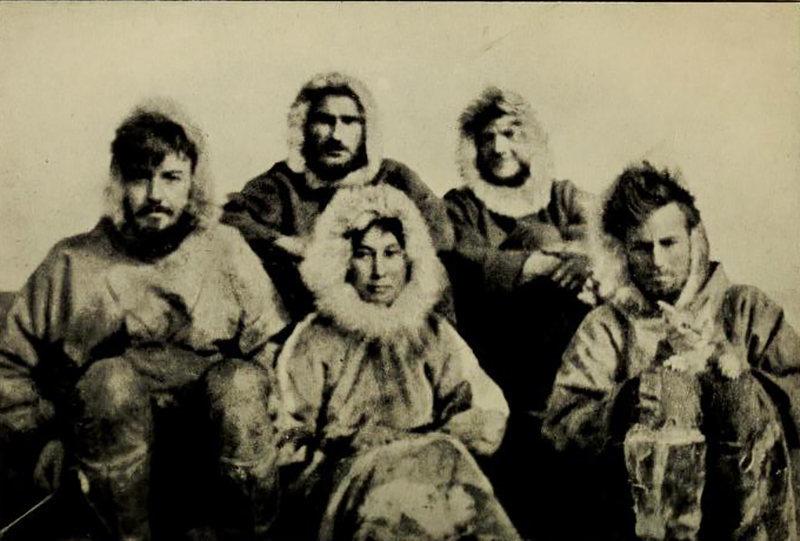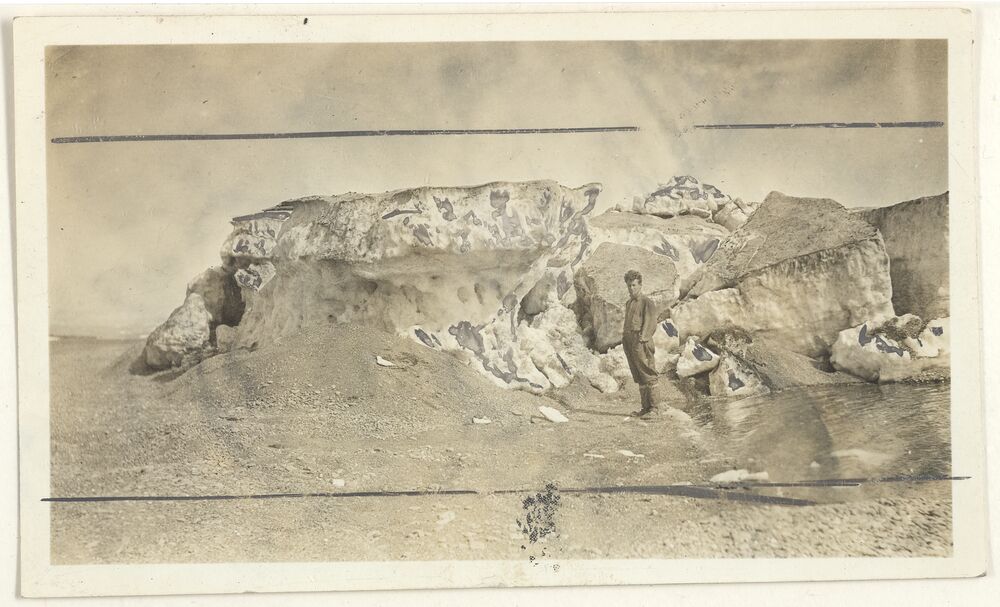Selections from the Vilhjalmur Stefansson Collection on Polar Exploration, 1900-1930

The Wrangel Island Expedition team. Front row, left to right: Allan Crawford, Ada Blackjack, Milton Galle (with the expedition's cat, Vic). Back row left to right: Fred Maurer, Lorne Knight.
Wrangel Island is a gateway to the northern portion of the Arctic Sea above the Bering Strait. This 2,900-square-mile expanse has been claimed at various times by Canada and Russia. Manuscript materials in the Dartmouth Library’s Vilhjalmur Stefansson Collection on Polar Exploration document Wrangel Island from 1900-1930. This digital project “collates” these materials in order to reveal the nuanced history of this contested space.
Wrangel never supported an Indigeneous human population, but it was a refuge for polar explorers awaiting rescue. Others attempting to settle the Island died, undone by their naiveté and Anglo-American hubris. The correspondence, manuscript drafts, photographs, contracts, and diaries from the Stefansson Collection related to Wrangel’s history provide a rich backstory to elucidate current political, social, economic, and environmental factors that shape our understanding of the Arctic regions.
Drawing on five distinct collections, The Papers of Vilhjalmur Stefansson, The Papers of Ada Blackjack, the Papers of Harold Noice, the Vilhjalmur Stefansson Collection of Arctic Photographs, and the Encyclopedia Arctica, this digital project brings together many disparate facets of the history of Wrangel Island. In it you will find thousands of items in a variety of media from a key period of the island’s history. Also included are sample lesson plans for using the materials with elementary, secondary, and college students, as well as two digital exhibits curated by students in Dartmouth Professor Ross Virginia’s Environmental Studies 15 course, “The Earth’s Cold Regions.”
The materials center around the final years of what has come to be known as the “heroic age” of Arctic exploration when the Northwest Passage was finally realized. During this period, Vilhjalmur Stefansson oversaw two Arctic expeditions where Wrangel Island provided a crucial setting. When his Canadian Arctic Expedition (1913-1916) lead ship, the Karluk, sank after being crushed by ice, Wrangel Island provided a haven and point of rescue for the survivors. Then, encouraged by the Karluk survivors and hoping to prove his theory of the “Friendly Arctic,” Stefansson organized the ill-fated Wrangel Island Expedition (1921-23) where all but one member of the expedition died. The only survivor was the Iñupiat seamstress hired in Nome, Alaska, at the start of the expedition: Ada Blackjack. Her diary, transcribed here in full, provides an Indigenous perspective on Arctic survival.
Through a series of partnerships and initiatives, including the Mellon-funded Advancing Pathways for Long-term Collaboration project, the Dartmouth Library is working toward the responsible stewardship of Indigenous materials like Ada Blackjack’s diary in keeping with the Protocols for Native American Archival Materials.
This project was supported by a gift from the Gladys Krieble Delmas Foundation, and through support from the Alaska Library Network.
